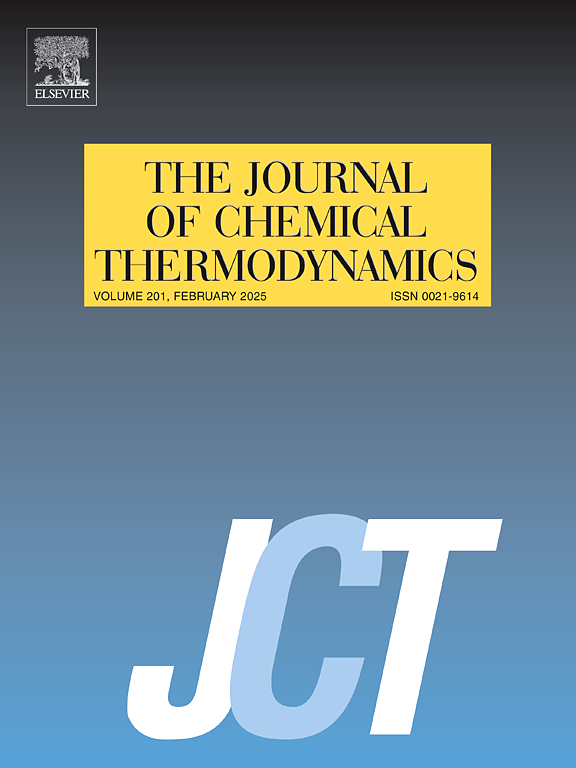Molecular interaction and esterase activity of bovine serum albumin with Pazopanib using multi-spectroscopic techniques and molecular docking
IF 2.2
3区 工程技术
Q3 CHEMISTRY, PHYSICAL
引用次数: 0
Abstract
This work delves into the binding dynamics of a promising anti-cancer drug Pazopanib (PZB) with bovine serum albumin (BSA), a mammalian plasma protein carrier with incredible ligand-binding properties. PZB is a tyrosine kinase inhibitor (TKI) used as a monotherapy against advanced renal cell carcinoma, soft tissue sarcoma, and liver fibrosis. Drug-albumin interactions vary with concentration, affecting drug efficacy and toxicity. Herein, we have investigated the binding mechanism of PZB with BSA at higher drug concentrations (5 × 10−6 mol/kg - 4 × 10−5 mol/kg) than albumin (3 × 10−6 mol/kg) using techniques like absorption, steady-state fluorescence, FRET, FT-IR, synchronous fluorescence, CD, and molecular docking. The intrinsic BSA fluorescence quenches with gradual increase in concentration of PZB via static quenching. The binding constant was found to be moderate (6.497 × 104 mol −1.kg) and it has only one binding site. The Förster distance (r) indicated probable transfer of energy between the donor BSA and acceptor PZB. The major interacting forces are hydrophobic forces and hydrogen bonding. Conformational change in the protein framework was revealed from synchronous fluorescence, FT-IR, and CD studies. Competitive binding experiments as well as docking studies suggest that PZB binds to site I (subdomain IIA) of BSA. The increase in kinetic parameters reveals that the catalytic efficiency of BSA is enhanced on PZB interaction.

利用多光谱技术和分子对接研究牛血清白蛋白与帕唑帕尼的分子相互作用和酯酶活性
这项工作深入研究了一种有前途的抗癌药物Pazopanib (PZB)与牛血清白蛋白(BSA)的结合动力学,牛血清白蛋白是一种具有令人难以置信的配体结合特性的哺乳动物血浆蛋白载体。PZB是一种酪氨酸激酶抑制剂(TKI),用于治疗晚期肾细胞癌、软组织肉瘤和肝纤维化。药物与白蛋白的相互作用随浓度的变化而变化,影响药物的疗效和毒性。本研究利用吸收、稳态荧光、FRET、FT-IR、同步荧光、CD和分子对接等技术,研究了PZB在较高药物浓度(5 × 10−6 mol/kg - 4 × 10−5 mol/kg)下与白蛋白(3 × 10−6 mol/kg)的结合机制。随着PZB浓度的逐渐增加,BSA本征荧光通过静态猝灭而猝灭。结合常数为6.497 × 104 mol−1 kg,且只有一个结合位点。Förster距离(r)表明供体BSA和受体PZB之间可能存在能量转移。主要的相互作用力是疏水力和氢键。同步荧光、FT-IR和CD研究揭示了蛋白质框架的构象变化。竞争结合实验和对接研究表明,PZB结合到BSA的I位点(亚结构域IIA)。动力学参数的增加表明BSA对PZB相互作用的催化效率提高。
本文章由计算机程序翻译,如有差异,请以英文原文为准。
求助全文
约1分钟内获得全文
求助全文
来源期刊

Journal of Chemical Thermodynamics
工程技术-热力学
CiteScore
5.60
自引率
15.40%
发文量
199
审稿时长
79 days
期刊介绍:
The Journal of Chemical Thermodynamics exists primarily for dissemination of significant new knowledge in experimental equilibrium thermodynamics and transport properties of chemical systems. The defining attributes of The Journal are the quality and relevance of the papers published.
The Journal publishes work relating to gases, liquids, solids, polymers, mixtures, solutions and interfaces. Studies on systems with variability, such as biological or bio-based materials, gas hydrates, among others, will also be considered provided these are well characterized and reproducible where possible. Experimental methods should be described in sufficient detail to allow critical assessment of the accuracy claimed.
Authors are encouraged to provide physical or chemical interpretations of the results. Articles can contain modelling sections providing representations of data or molecular insights into the properties or transformations studied. Theoretical papers on chemical thermodynamics using molecular theory or modelling are also considered.
The Journal welcomes review articles in the field of chemical thermodynamics but prospective authors should first consult one of the Editors concerning the suitability of the proposed review.
Contributions of a routine nature or reporting on uncharacterised materials are not accepted.
 求助内容:
求助内容: 应助结果提醒方式:
应助结果提醒方式:


